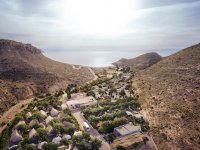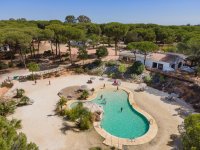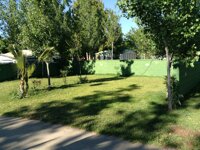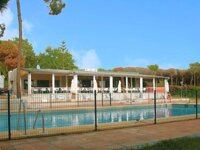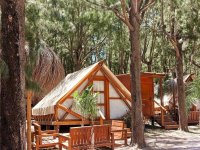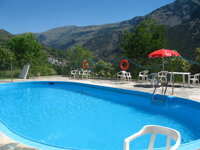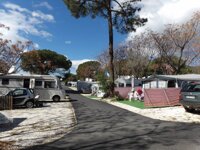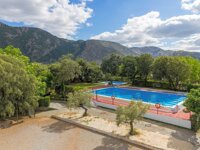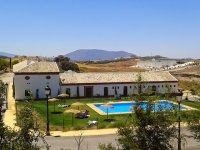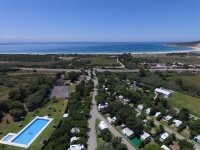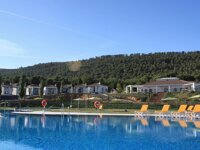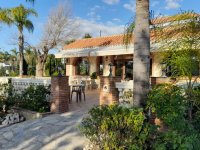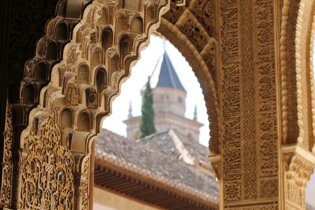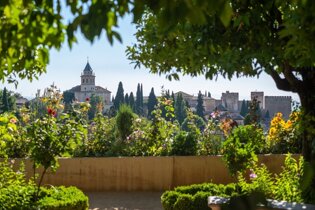Camping in Andalucia
67 campsites in Spain, Andalucia
Campsite Listing Google Map
The following consent is required:
Tracking & performance, Targeting & advertising.
Andalucia
Famous for its sun, beautiful traditions, poets, original folklore, age-old history and magnificent heritage left behind by the Moors, Andalucía is one of the most attractive regions in Spain.
Can you point to Europe’s only desert on a map? Do you know where you can stand with your feet in the snow while looking at Africa? Guess where you can find castle-crusted crags, stranded in time, yet only an hour’s drive from bustling seaside resorts? Fancy skiing this morning, followed by a dip in the sea this afternoon?
Andalusia is the axis between Europe and Africa and the meeting point of the Atlantic Ocean and the Mediterranean Sea. This region has been coveted by many different cultures throughout history since prehistoric times.
The Andalusia region has an area of 87,268 km2 and represents 17.3% of Spain and is, therefore, larger than the entire Benelux region.

With the River Guadalquivir running through it, the charming city of Seville is one of the most visited places in the region. The old city, with its great monuments, the Giralda Tower, cathedral and the Alcázar, plus the narrow, winding streets of Santa Cruz, is particularly popular. Also on the Guadalquivir, Cordoba is located northeast of Seville. It has a picturesque Jewish Quarter along with a rich Moorish heritage. Indeed, the Mezquita is one of the grandest mosques ever built by the Moors in Spain.
Located further east on the foothills of the Sierra Nevada mountain range, Granada is home to the impressive Alhambra, a group of distinct buildings including a Royal Palace, splendid gardens, and the fortress of Alcazaba. The Sierra Nevada, Spain’s highest range, offers good skiing and trekking. Further south, you’ll find the fine beaches and tourist areas of the Costa Tropical and the Costa del Sol, including the developed resort of Malaga. There are more beaches on the west coast, plus one of the oldest settlements in Spain, the bustling port of Cádiz.
The diversity of landscapes and geographic terrain leads to a range of environments ranging from the heat of the Guadalquivir River valley to lush low mountain areas and volcanic landscapes such as the Tabernas Desert and the snow-capped Sierra Nevada peaks.
In barely forty kilometres, you can go from alpine mountain landscapes to tropical areas on the shores of the Mediterranean. The coast of Andalusia stretches for almost 900 kilometers and is home to a large number of towns, villages and beaches that are a pleasure to visit.
The whole ensemble represents a range of attractions for tourists, from impressive monuments in big cities to typical small villages, which have been a constant source of inspiration for artists of all kinds.
Andalucía comprises of eight regions: Almeria, Cadiz, Cordoba, Granada, Huelva, Malaga, Jaen and Seville.
Points of interest

Almeria: preserved Moorish heritage with greatest purity. Located on a beautiful bay.
Casa-Museo Pablo Ruiz Picasso: art museum including collection of originals by Pablo Picasso.
Jaen: medieval fortress, Renaissance cathedral, 11th-century Moorish baths, Santa Catalina castle.
Jerez de la Frontera: birthplace of sherry and Spanish brandy, site of renowned equestrian school.
Mijas: enchanting village, with narrow streets bordered by brilliantly white-washed houses.
Parque Natural de las Sierras de Cazorlay Segura: largest park in Spain with mountains, river gorges, forests and wildlife.
Ronda: beautiful town on the edge of an abrupt rocky precipice.
Cuisine of the region

Andalucía has more tapas bars than anywhere else in Spain. Seafood in abundance, fresh vegetables and fruit: oranges from Cordoba; persimmons, pomegranates, figs, strawberries from Alpujarra; avocados, mangos, guavas, papayas from the coast of Granada and Malaga. Locally produced wine and sherry.
Alboronía: vegetable stew.
Alfajors: almond and nut pastry.
Gazpacho ajoblanco: cold soup with garlic and almond.
Gazpacho salmorejo: much thicker and made with tomatoes only.
Pestiños: honey coated pastries.
Tocinillo de cielo: pudding made with egg yolks and syrup.

